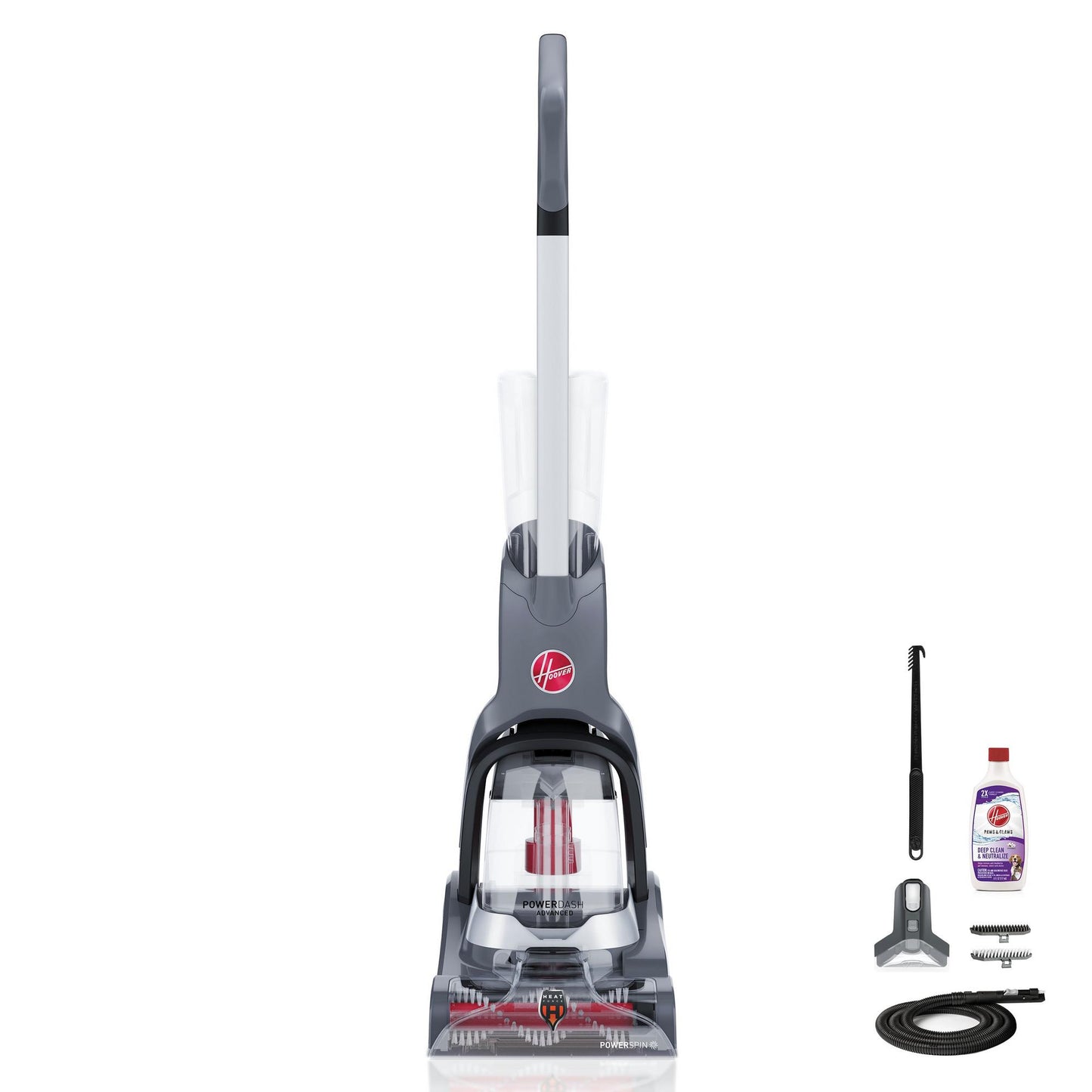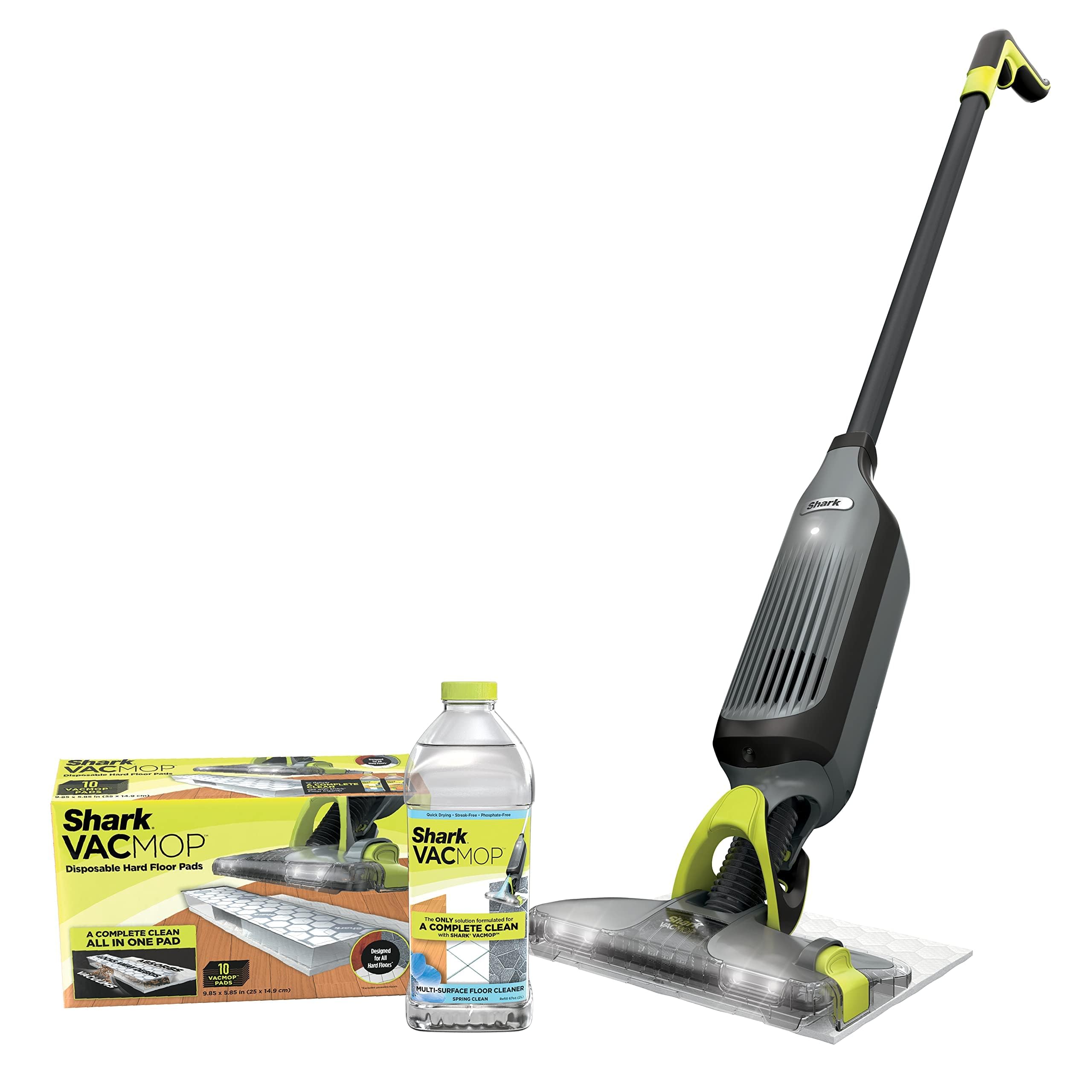To fix a vacuum brush that isn’t spinning, first unplug the vacuum, then clean any hair and debris from the brush. Check the belt for wear and replace it if necessary.
Dealing with a vacuum cleaner brush that stops spinning can be frustrating. It’s commonly an issue with tangled hair and debris, or a worn-out belt that’s easy to overlook. Regular maintenance is crucial to keep your vacuum running smoothly. Homeowners rely on their vacuums to keep floors dirt-free, but without a functional brush roll, this task becomes challenging.
Ensuring a clear brush roll and an intact belt is part of essential vacuum care that prolongs its life and ensures peak performance. Starting with simple checks and basic fixes can often restore the functionality of your vacuum, saving you time and avoiding the need for costly repairs or replacements.
Identifying The Issue
When your vacuum cleaner’s brush stops spinning, it can transform a simple cleaning task into a frustrating challenge. A non-rotating brush means less effective cleaning, leaving dirt and debris behind on your carpets and floors. To tackle this issue head-on, it’s crucial to recognize the early signs and symptoms that point to the underlying cause of the problem.
Signs Of Brush Not Spinning
Recognizing the signs that indicate a problem with the brush can save you time and effort when looking for solutions. Key indicators include:
- Visible Inactivity: A clear observation of the brush not moving while the vacuum is on.
- Unusual Noises: Hearing sounds that differ from the normal operating noise, possibly indicating a jam or malfunction.
- Poor Cleaning Results: Noticing that the vacuum is not picking up debris as effectively as it should.
Symptoms To Look Out For
Alongside the clear signs, there are additional symptoms one should be aware of:
| Symptom | Possible Cause |
|---|---|
| Excessive Vibration | Could be a sign of debris lodged in the brush or a misalignment. |
| Brush Stiffness | If the brush is difficult to manually turn, accumulated hair or fibers may be to blame. |
| Burnt Rubber Smell | An indication that the brush belt may be worn out or damaged. |
| Reduced Suction | Though not directly linked to the brush, it can be a sign of an overall vacuum performance issue that needs addressing. |
Once these signs and symptoms are noted, the next step is to inspect the vacuum for possible causes such as blockages, worn belts, or electrical faults. Identifying which symptom corresponds to which problem is the first step in getting your vacuum back to its optimal cleaning performance.

Credit: hoover.com
Checking For Blockages
If your vacuum cleaner’s brush has stopped spinning, it could be due to a common issue: blockages. Dirt, hair, and debris can accumulate over time and interfere with the brush’s ability to rotate. Learning how to inspect and clear these blockages can restore your vacuum to full functionality. In this section, we’ll guide you through the process of checking for blockages so you can get your vacuum back on track.
Inspecting Brush For Debris
Begin with a thorough inspection of the vacuum brush. Unplug the vacuum cleaner for safety, then access the brush roll. Look for visible signs of entangled hair, string, or other debris that could be hindering the brush’s movement. Often, this is the primary culprit behind a non-spinning vacuum brush.
- Unplug the vacuum cleaner
- Remove the base plate to expose the brush roll
- Rotate the brush manually and observe for obstructions
Clearing Brush Of Obstructions
Once you’ve identified the blockages, the next step is to clear your vacuum brush of these obstructions. This is usually a simple process but can make a world of difference in the performance of your appliance.
- Use scissors to carefully cut away any materials wrapped around the brush
- Remove the debris by hand or with the help of pliers
- Make sure to clear the end caps and ensure they’re not stuck due to collected dirt
After removing the blockages, check that the brush can spin freely by rotating it with your hand. Reattach the base plate and plug the vacuum cleaner back in. With any obstructions removed, your vacuum brush should now be spinning smoothly, allowing you to achieve effective cleaning results once again.
Checking The Belt
A spinning brush is integral to a vacuum’s ability to scrub and pick up debris from your floors. When the vacuum brush stops spinning, the belt is often the culprit. The vacuum belt transmits the power from the motor to the brush, helping it rotate. Wear and tear over time can lead to a deterioration of the belt’s integrity, causing your vacuum brush to cease spinning. Examining and replacing the vacuum belt, if necessary, can restore your vacuum’s functionality. This section will guide you through the steps to evaluate your vacuum’s belt condition and how to replace it, if needed.
Evaluating Belt For Wear And Tear
Over time, the vacuum belt can become worn, stretched, or even break. Regular inspection for signs of wear is crucial to maintaining your vacuum’s performance. Follow these simple steps to evaluate your vacuum’s belt:
- Unplug the vacuum cleaner to ensure safety.
- Access the brush roll, typically found underneath the vacuum’s cleaning head.
- Look closely at the belt to check for any signs of wear, such as cracks, fraying, or a loose fit around the brush roll.
- Familiarize yourself with what a healthy belt should look like — it should appear snug and elastic.
If the belt is stretched, cracked, or seems too loose to turn the brush efficiently, it’s time for a replacement.
Replacing The Vacuum Belt
A faulty belt impedes the vacuum’s performance, but replacement is generally straightforward. Here’s how to replace a worn-out vacuum belt:
- Again, make sure the vacuum is unplugged.
- Remove the bottom plate of the cleaning head to expose the brush roll and belt.
- Slide the brush roll out and remove the old belt.
- Purchase the correct replacement belt that matches your vacuum’s model.
- Place the new belt over the motor shaft and then over the brush roll’s end.
- Set the brush roll back into its slots, ensuring the belt is taught but not overly stretched.
- Replace the bottom plate and secure any fasteners.
With a new belt installed, your vacuum’s brush should spin freely, revitalizing your machine’s cleaning ability. Remember to consult your vacuum’s manual for model-specific instructions to ensure correct installation.
Diy Maintenance
The convenience of a well-functioning vacuum cleaner is second to none when it comes to keeping your floors pristine. Yet, sometimes you might encounter a hiccup with your appliance, namely a vacuum brush that refuses to spin. Fear not, as many times this problem can be remedied with some simple DIY maintenance. Before you consider a costly replacement or professional repair, let’s walk through a few steps you can take to fix the issue yourself.
Step-by-step Cleaning Procedure
Regular cleaning of your vacuum’s brush can often restore its functionality. Dirt, hair, and other debris can cause the brush to seize up and stop spinning.
- Unplug your vacuum to ensure safety before starting any maintenance work.
- Access the brush roll by either flipping the vacuum over or opening the bottom cover, depending on your model.
- Inspect the brush for obvious obstructions. Remove any large pieces of debris by hand.
- Use scissors or a seam cutter to carefully cut away and remove tangled hair or threads from the brush.
- Remove the brush roll completely for a thorough cleanse if it’s heavily soiled. Consult your vacuum’s manual for specific disassembly instructions.
- Clean the brush bristles, using a mild soap and water if necessary. Avoid getting the brush’s bearings wet to prevent rusting.
- Dry the brush roll completely before reinserting it into the vacuum.
- Check the belt that connects the brush roll to the motor. If it’s broken or stretched out, it will need replacement.
- Reassemble your vacuum once the brush is clean and dry, and the belt is in good condition.
- Plug in your vacuum and test the brush roll by turning on the machine.
Following this procedure can often breathe new life into a non-spinning brush, ensuring your vacuum cleaner is back to its top performance.
Seeking Professional Assistance
Encountering a vacuum brush that won’t spin can bring your cleaning routine to a frustrating halt. While there are several troubleshooting steps you can try at home, some situations call for expert intervention. Seeking professional assistance is a practical step to ensure your vacuum is safely and correctly repaired. Let’s dive into knowing when it’s time to hand over the troubleshooting to the pros.
Knowing When To Consult A Technician
It’s essential to recognize the signs that indicate a need for professional repair. If you’ve already checked the basics—like ensuring your vacuum’s belt isn’t broken or the brush roll isn’t clogged with hair and debris—and the problem persists, it might be time to seek a technician. Here are a few instances when professional help is advisable:
- Repeated issues: If you have attempted to fix the brush multiple times without success, the problem might be more complicated than it appears.
- Electrical faults: When you suspect electrical issues, such as a malfunctioning motor or wiring problems, a certified technician’s skills are crucial for safe and effective repairs.
- Warranty coverage: Check if your vacuum is still under warranty. In that case, tampering with it may void the warranty. Better to let authorized service personnel handle the repair.
Recognizing the limits of DIY repairs not only saves time but also guards against further damage to your vacuum. Engaging an expert provides peace of mind that your appliance is in capable hands.
Frequently Asked Questions For How To Fix Vacuum Brush Not Spinning
Why Is My Vacuum Brush Not Spinning?
A vacuum brush may stop spinning due to tangled hair and debris, a malfunctioning belt, a blocked airway, or motor issues.
How Can I Fix A Stuck Vacuum Brush?
Clear any entangled debris from the brush, inspect and replace the belt if necessary, and ensure airflow is unobstructed.
What Causes A Vacuum Brush To Seize Up?
Over time, accumulated hair, fibers, and dirt can jam the brush, while worn belts or faulty bearings may also contribute to seizing.
When Should I Replace My Vacuum’s Belt?
Replace the vacuum’s belt if it appears worn, stretched, or broken during a routine inspection, typically every 6-12 months for optimal performance.
Conclusion
Tackling a non-spinning vacuum brush can be straightforward with the right approach. Ensure you turn off and unplug your device before any inspection or cleaning. This guide has walked you through common issues and easy solutions, empowering you to restore your vacuum’s functionality.
Regular maintenance can prevent future hiccups, so keep these tips handy for a dust-free home.

